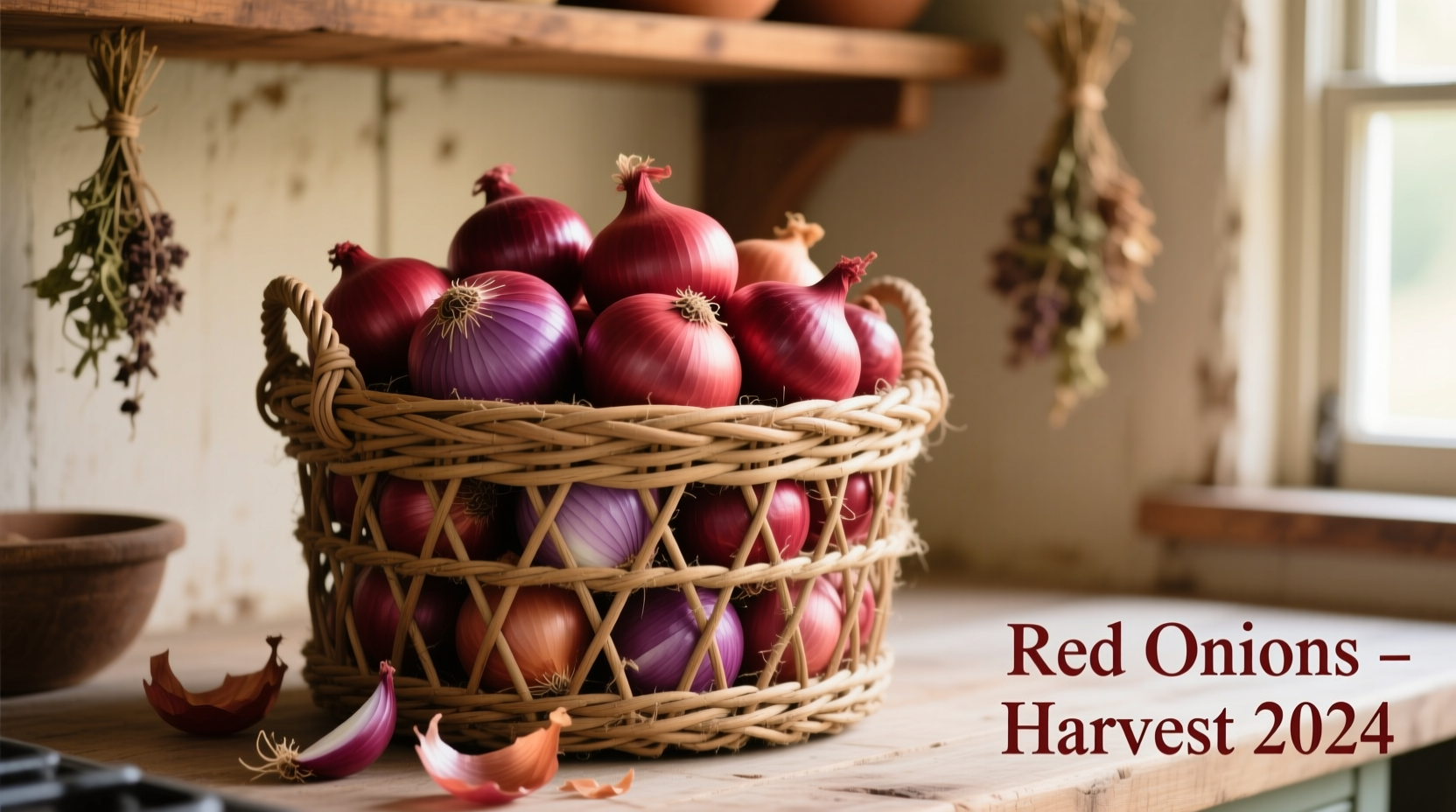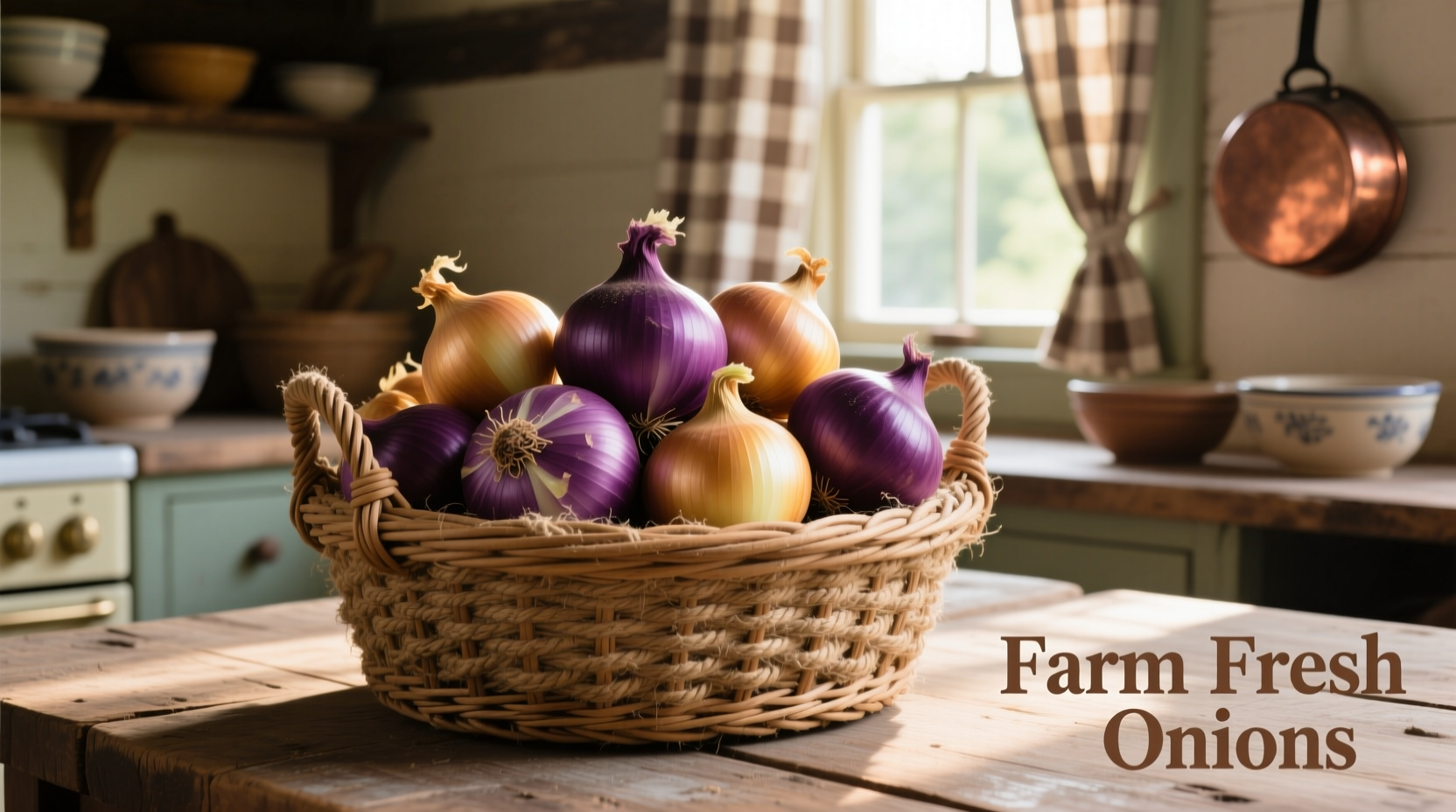An onion basket is a specialized kitchen storage container designed with optimal ventilation to extend the shelf life of onions by preventing moisture buildup and promoting air circulation. Proper storage in an onion basket can keep onions fresh 2-3 times longer than plastic bags or sealed containers.

Why Your Onions Keep Spoiling (And How to Fix It)
Most home cooks make critical mistakes storing onions that lead to premature sprouting, mold growth, and soft spots. The USDA reports that improper storage causes 30% of household onion waste. Unlike what many believe, refrigeration actually reduces shelf life for most onion varieties. The solution? Understanding the science behind proper onion storage and using the right tool for the job.
What Exactly Is an Onion Basket?
An onion basket isn't just any container—it's specifically engineered with strategic ventilation patterns that maintain the ideal 50-60% humidity level onions require. Traditional designs feature:
- Woven materials (rattan, bamboo, or wire mesh) allowing 360-degree airflow
- Elevated bases preventing moisture accumulation
- Dark interior spaces mimicking natural storage conditions
- Compact footprints fitting in standard kitchen spaces
The Science Behind Proper Onion Storage
Onions continue metabolic activity after harvest. Cornell University's Food Science Department confirms that proper storage slows respiration rates, preserving flavor compounds and preventing spoilage. Key factors include:
| Storage Factor | Optimal Condition | Consequence of Poor Control |
|---|---|---|
| Temperature | 45-55°F (7-13°C) | Cold temps cause sprouting; warmth accelerates decay |
| Humidity | 50-60% | High humidity = mold; low humidity = dehydration |
| Airflow | Constant gentle circulation | Stagnant air = moisture pockets and spoilage |
| Light Exposure | Complete darkness | Light triggers sprouting and flavor degradation |
Evolution of Onion Storage Methods
Understanding historical approaches reveals why modern onion baskets work:
- Pre-1900s: Onions stored in braided strings hung in root cellars (Cornell University Agricultural Extension records)
- 1920-1950s: Mesh bags became popular but often trapped moisture at the bottom
- 1960s-1990s: Plastic containers dominated despite causing premature spoilage (USDA Food Waste Studies)
- 2000s-Present: Return to ventilated designs informed by food science research
Selecting Your Ideal Onion Basket
Not all onion storage solutions work equally well. Consider these factors based on your specific kitchen needs:
Material Matters Most
- Natural fibers (rattan/bamboo): Best for dry climates—absorbs excess moisture
- Wire mesh: Ideal for humid environments—maximizes airflow
- Avoid: Solid-bottom containers or plastic bins that trap moisture
Size Considerations
Choose based on your typical onion consumption:
- Small households: 8-10 inch diameter (holds 1-2 pounds)
- Regular cooks: 12-14 inch diameter (holds 3-5 pounds)
- Meal preppers: Consider stackable designs for larger quantities
Proper Usage Techniques for Maximum Results
Even the best onion basket fails when used incorrectly. Follow these chef-tested methods:
Step-by-Step Storage Protocol
- Inspect onions for bruises or soft spots before storage
- Leave onions in their natural skins—never wash before storage
- Arrange with space between bulbs (don't overcrowd)
- Store in a cool, dark location away from potatoes (they emit moisture-promoting gases)
- Check weekly and remove any showing signs of spoilage
When Onion Baskets Aren't the Solution
Context matters—onion baskets work best for specific situations:
- Works well: Whole, unpeeled onions in moderate humidity environments
- Limited effectiveness: Cut onions (require refrigeration in airtight containers)
- Not suitable: Sweet onions like Vidalias (more perishable—use within 1-2 weeks)
- Better alternatives: Garlic (requires different humidity levels)
Common Mistakes That Ruin Your Onions
Avoid these critical errors that negate your onion basket's benefits:
- Storing near heat sources like stoves or dishwashers
- Keeping onions in plastic bags inside the basket
- Washing onions before storage (introduces moisture)
- Storing with potatoes (accelerates sprouting)
- Using baskets with solid bottoms that collect moisture
Beyond the Basket: Complementary Storage Practices
Maximize results with these professional techniques:
- Store different onion varieties separately (yellow vs. red vs. sweet)
- Rotate stock using FIFO method (First In, First Out)
- Keep in a location with consistent temperature (avoid entryways)
- Use cedar blocks nearby to deter pests naturally
Alternatives When Space Is Limited
Apartment kitchens need creative solutions:
- Hanging mesh bags in pantry doors
- Repurposed wine racks with horizontal slats
- DIY solutions using colanders elevated on cups
- Under-shelf baskets maximizing vertical space
FAQ: Onion Storage Essentials
How long do onions last in a proper onion basket?
When stored correctly in a ventilated onion basket at 50-55°F with 50-60% humidity, most yellow onions last 2-3 months. Red onions maintain quality for 1-2 months, while sweet varieties like Vidalias last 2-4 weeks. This compares to 1-2 weeks in plastic bags under typical kitchen conditions.
Can I store garlic in the same basket as onions?
No, garlic requires different storage conditions than onions. Garlic needs higher humidity (60-70%) and slightly cooler temperatures. Storing them together causes both to deteriorate faster. Use separate containers—one for onions, another for garlic—to maximize shelf life for both.
Should I refrigerate onions during summer months?
Only cut onions should go in the refrigerator. Whole onions stored in a proper basket at room temperature last longer than refrigerated ones. The University of California Food Safety Program confirms that refrigeration causes onions to absorb moisture, leading to accelerated spoilage. In extremely hot climates (above 80°F), consider a basement or coolest interior room instead of refrigeration.
Why do my onions keep sprouting in the basket?
Sprouting typically indicates light exposure or temperature fluctuations. Ensure your basket is in complete darkness—even small light leaks trigger sprouting. Also verify consistent temperatures between 45-55°F. If using a wire basket in a humid environment, try switching to a natural fiber basket that absorbs excess moisture. Remove any sprouted onions immediately to prevent others from following suit.
Can I wash onions before storing them in the basket?
Never wash onions before storage. The USDA Food Safety guidelines explicitly state that moisture introduction dramatically increases spoilage risk. Dirt on onions actually provides a protective layer. Only clean onions immediately before use. If onions arrive particularly dirty from the store, wipe gently with a dry cloth rather than washing.











 浙公网安备
33010002000092号
浙公网安备
33010002000092号 浙B2-20120091-4
浙B2-20120091-4